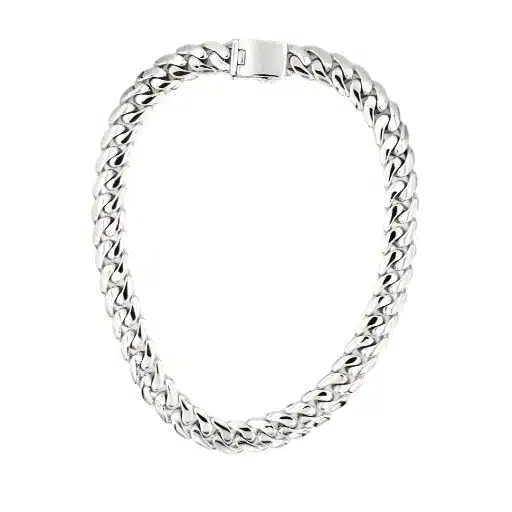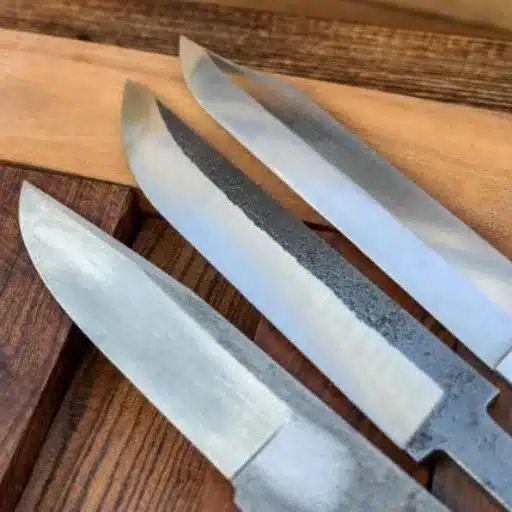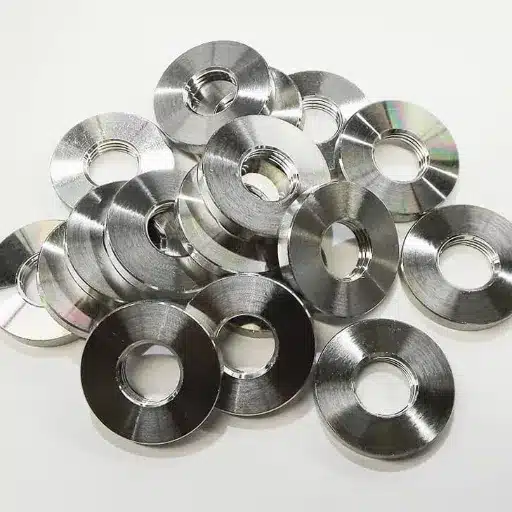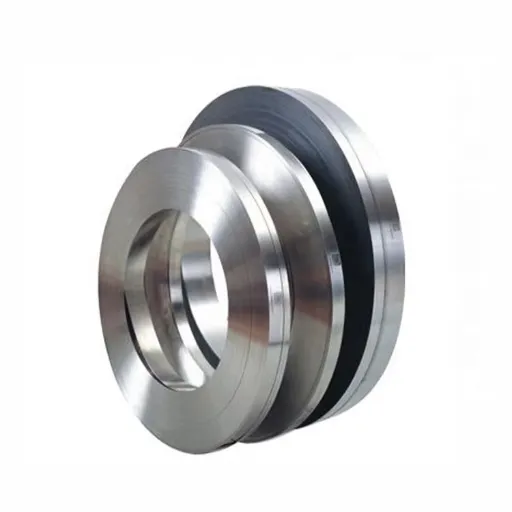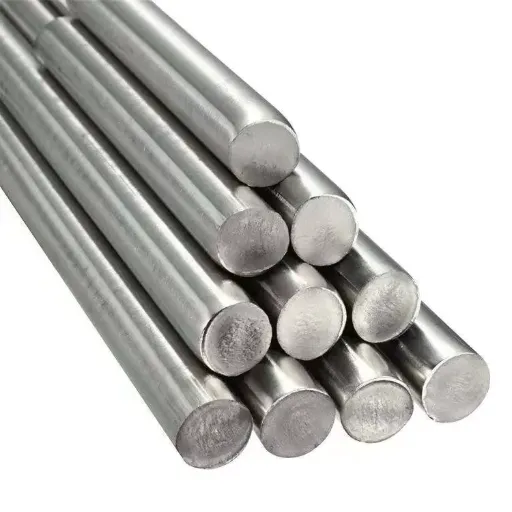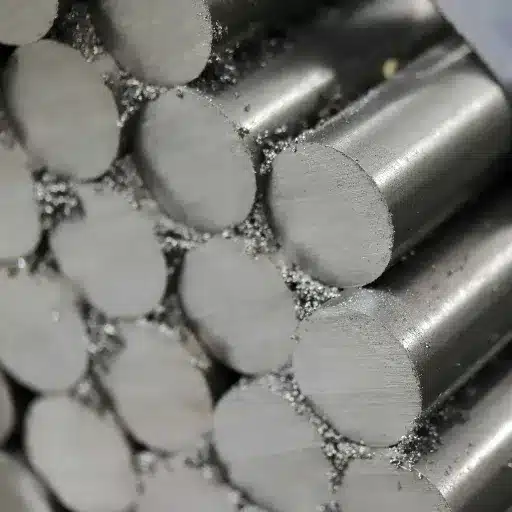The highest quality, sturdiness, and ease of use of Zero Tolerance knives make them extremely favorable, even to knife lovers and professionals alike. This performance steel is none other than CPM 20 CV steel, a high-grade stainless steel renowned for its exceptional wear resistance, ability to retain a longer cutting edge, and corrosion resistance. Why is this high-power steel design, CPM 20CV, such a revolutionary grade? This article comprehensively addresses the question by examining the composition, characteristics, and use of this steel in Zero Tolerance knives. So, whether you are an avid collector or just starting out, this comprehensive guide will show you how materials science can be combined with inventive engineering to create these excellent blades. Get ready to learn that CPM 20VC is all about combining strength and style.
Introduction to CPM 20CV
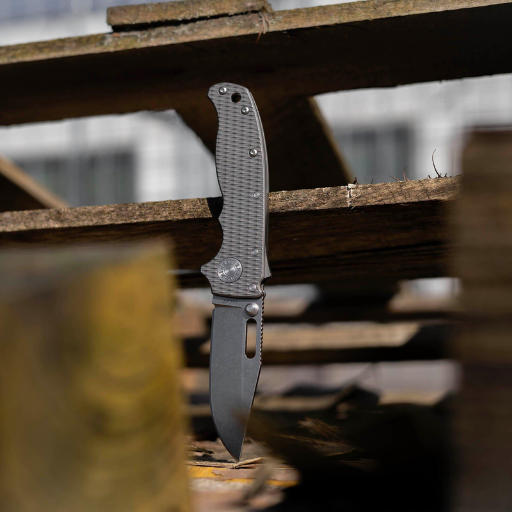
Grad CPM 20CV stainless steel is considered the finest among other quality stainless steels due to its excellent qualities, including high wear resistance, good corrosion resistance, and decent edge retention. Grade CPM 20CV, elaborated in a positive method of steel smelting, contains considerable levels of chromium, vanadium, and also molybdenum, which gives the steel extra and tremendous strength. Unlike most other steels, this composition enables CPM 20CV steel to perform exceptionally well, particularly in luxury knife models, offering excellent cutting abilities and edge retention. The combination allows cutlery made of 20CV steel to be used for heavy-duty purposes with little to no care required for the blade.
What is CPM 20CV?
Grad cpm 20cv is characterized by high-end techniques in the steel industry. Knives and tools of high performance often require knives made from this material due to its exceptional corrosion resistance and wear-resistant capabilities.
Key Features of CPM 20CV
- Incredible Durability of the Material
Just like any other high-wear tool steels, grade CPM 20CV possesses vanadium carbides in relatively large amounts, which makes it one of the few steels that fall into the stainless steel category, yet have extremely high wear resistance. Therefore, it is effective when applied to cutting activities where knives are expected to be used for a prolonged period without sharpening.
- Retention of the Cutting Edge for a Prolonged Period
With a Rockwell hardness ranging from 59 to 61, CPM-20CV is noted for its high degree of hardness and retention of the cutting edge. It is unique among other high-end steel alloys in its ability to remain sharp even after prolonged use.
- Extraordinary Resistance to Attack by Corroding Agents
The steel contains about 20 percent chromium, which is known for providing excellent anti-corrosive properties. It’s also designed to be used in instances where rust cannot be tolerated due to moist environments or complex conditions, and thus is preferred.
- Toughness at Rather High Benefits
While designed at its core to maximize hardness and resistance to wear, CPM 20CV also excels in toughness, particularly among its class of high-carbide steels. This balance is maintained such that the blade will not chip easily under normal circumstances.
- Powder Metallurgy Process
A product of the Crucible Particle Metallurgy (CPM) technique, CPM 20CV possesses a homogenized structure that offers metallurgical and machining advantages. The method mentioned above significantly reduces the content of contaminants, thereby enabling the production of a homogeneous structure.
- Chemical Composition
The chemical composition of CPM 20CV is given below:
- Carbon (C): 1.90% – It strengthens the material & maintains edge sharpness.
- Chromium (Cr): 20.00% – Helps in resisting corrosion.
- Vanadium (V): 4.00% – Increases the resistance to wear & also enhances the toughness.
- Molybdenum (Mo): 1.00% – Helps in making it harder and increasing its corrosion resistance.
- Tungsten (W): 0.60% – It enhances wear resistance and provides extra strength.
- Applications
That’s why grad cpm 20cv often finds its applications in the premium segment of knives, cutting devices, as well as in some of the unique industrial use. The strongest of them all, CPM 20CV can operate in severe or moderately hostile environments and still deliver the best task completion, making it loved and appreciated at various levels of engagement.
Comparison with Other Blade Steels
| Steel | Edge Retention | Corrosion Resistance | Toughness | Ease of Sharpening | Wear Resistance | Best Use |
|---|---|---|---|---|---|---|
| CPM 20CV | High | High | Medium | Hard | High | Premium EDC, high-end knives |
| M390 | High | High | Medium-High | Medium-Hard | High | Similar to CPM 20CV |
| CTS-204P | High | High | Medium | Hard | High | High-end knives |
| S35VN | High | High | High | Medium | Medium-High | Balanced performance |
| S30V | Medium-High | High | Medium | Medium | Medium-High | EDC knives |
| MagnaCut | High | High | High | Medium | Medium-High | Tough outdoor knives |
| S90V | Very High | High | Low | Very Hard | Very High | Specialized cutting tools |
| D2 | Medium | Low | High | Medium | Medium | Budget knives, tools |
| 154CM | Medium | Medium | Medium | Easy | Medium | Everyday knives |
| ELMAX | High | High | High | Medium-Hard | High | Versatile high-end knives |
Knife Applications of CPM 20CV
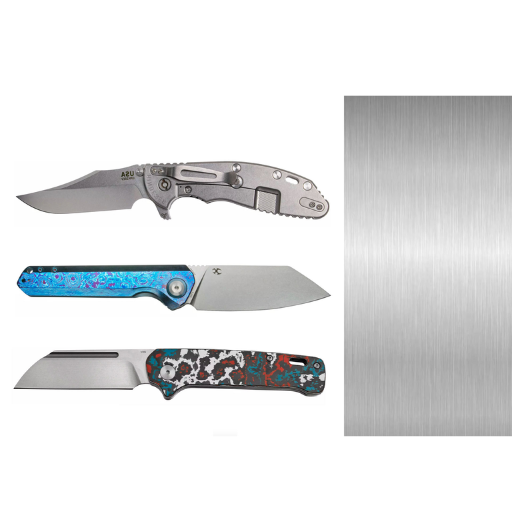
Cutting arts when it comes to knife making have changed tremendously over the years. The production cutlery has gone thru a lot of transformation as new materials such as CPM 20CV are now used to produce different kinds of knives. Grad CPM 20CV is a premium-grade steel with high and very long edge-holding capability. This grade of steel is used in premium knives, which are most often found in folders and fixed-blade designs, with custom knives being manufactured to meet customer requirements. It is a material that particularly possesses very high wear resistance perfect for the environment according to the manufacture which devotes a lot of emphasis on the resilience of such products, together with the fact that they do not rust as easily as other steels, it is an advantage for them to operate in wet or humid conditions, than with other steel. All these, therefore, make CPM 20CV an advantageous steel when looked at from both the active knife users’ perspective and the other side of knife-loving amateurs.
Popular Knives Featuring CPM 20CV
- Benchmade Bugout 535-3
The Benchmade Bugout 535-3 knife is designed for everyday carry (EDC) with the benefits of easy draw and lightweight construction. This knife is forged from CPM 20CV steel, which is known for its exceptionally high edge retention, edge, and rust resistance. The Bugout 535-3 feels light to the touch thanks to carbon fiber material, which is quite the opposite of several other knives. When it comes to high-end performing knives, consider a knife with a 3.24-inch blade that weighs only 2.02 oz.
- Spyderco Para 3 Lightweight
One of its many standout models, the Spyderco Para 3 Lightweight, is yet another that features the advantages of CPM 20CV steel. Measuring 2.92 inches in length, the drop-point blade is profiled to allow for ease of cutting with high durability and effective cutting, which complements the fine use of the knife. A feather-light FRN handle and a tactically lightweight blade spiral pin secure the entire tang in place, even under prolonged use. From its slim nature to its solid structure, there is no reason this particular knife wouldn’t be helpful in a city setting or a backwoods setting.
- Zero Tolerance Knives 0562CF
The Zero Tolerance 0562CF is a sturdy folding knife intended for more demanding use. It features a 3.5-inch blade made of CPM 20CV steel, characterized by exceptional sharpness and durability; therefore, the knife performs well in harsh conditions. The handle’s front scale is made from carbon fiber while the back is stainless steel, which makes it both firm and rather light. The KVT ball bearing system is a built-in system that guarantees easy opening and excellent functioning.
- W.E. Knife Banter
The W.E. Knife Banter is compact yet highly effective, boasting a 2.9-inch blade constructed from CPM 20CV steel. This offers high levels of cutting performance with excellent wear and stain resistance. It has a textured G-10 grip that provides a good hold and makes the knife easy to use. With all that it comes in a small package that is convenient to carry daily. Its docile and economical nature is well-regarded by knife lovers.
- Hogue Deka
The design of this folding knife is the classic Hogue Deka style and includes a cpm 20cv 3.25-inch steel blade.,In cutting tools it performs excellently., There is a comfortable and ergonomically designed handle from polymer to break its lighter weight (5 to 6 ounces)., It’s a spring-assisted associate that is well-liked by adjustment and outdoor activity enthusiasts.
The knife exemplifies the extraordinary effectiveness of his solution in designing a knife from grade CPM 20CV steel. Every single design has its specific purpose, from an ordinary urban transportation knife to excessively complex pointed types for extreme dicing.
Advantages of Using CPM 20CV in Knives
| Key Parameter | Advantage |
|---|---|
| Edge Retention | Exceptional sharpness over long use |
| Corrosion Resistance | High resistance to rust and staining |
| Wear Resistance | Outstanding durability against wear |
| Hardness | Maintains a strong, sharp edge |
| Toughness | Resists chipping under normal use |
| Versatility | Suitable for EDC and premium knives |
| Low Maintenance | Requires minimal care for longevity |
| Aesthetic Finish | Polishes to a mirror-like finish |
Specific Uses in Different Industries
- Types of Sports and Hobbies
Different aromatic and survival cookies are appreciated, made with knives from grade CPM 20CV. Compared to high carbon or stainless steel with titanium jimping or ultralow chromium content, this is great for cutting food, working on wood, fibers, and even in the rainy season due to its protective body. These features help users of survival and bushcraft activities to withstand even the most hostile conditions.
- Cooking Applications
Professional cooks and amateurs opt for high-quality cooking knives made from cpm 20cv. The long-lasting sharpness property of the steel translates into limited resharpening, which in turn enhances the domestic working efficiency of cutting raw materials. Its anti-rust property is particularly useful in a kitchen with high humidity.
- Defense and Military gear
Purified semi-trailer ladders, instead of regular straight carbon steel ladders, are made of extremely qualitative hardened stainless steel convergence known as CPM 20 CV. This is a highly technical issue for blade manufacture, especially when the 20CV grade is chosen as the material. However, the corrosion-resistant qualities may also be necessary for the blade due to its storage conditions.
The Grad CPM 20CV is very common in combat and tactical knives due to its strength and resilience. The knives find their winning application in performing challenging jobs, such as cutting heavy objects, and have been known to help out in activities that demand survival instincts. Lastly, they are also used in self-defense. The rise in preference for this steel is due to its ability to allocate funds for purposes that are coupled with high loads, as it is capable of enduring rigorous conditions.
- Professional and Industrial Tools
Professional staff and workers also take full advantage of this CPM 20CV in utility knives and cutting tools. This graduate’s CPM 20 CV doesn’t fail to deliver safety and high efficiency during serial processes of cutting materials, including ropes and wires.
- Collector and Premium Blades
You will come across CPM 20CV a lot in custom-made knives meant for laonnais or the devoted knife collectors. These knives not only have high functionality, but also beauty, for the most part, and the ability to customize and market is something that determines the cost, especially in cases where the products are not highly anticipated or were once in high demand.
Stainless Steel Information and Composition
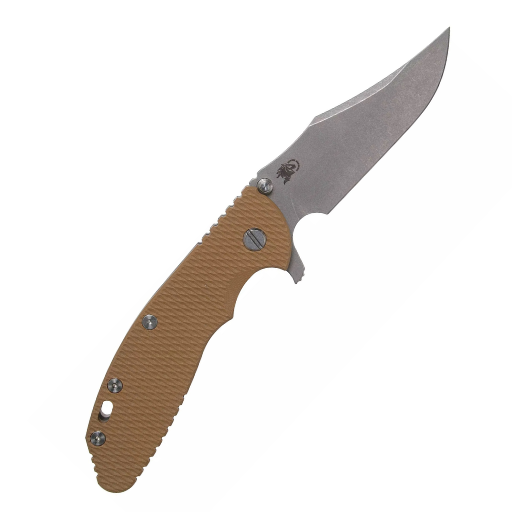
Stainless steel refers to a type of metal manufactured by mixing iron, chromium, and nickel with a smaller amount of carbon and other elements, such as molybdenum or manganese, to achieve customer-specific requirements. Key constituent chromium provides anti-corrosion properties by forming an oxide film on the metal’s surface, thereby preserving it from damage or corrosion. Primarily, stainless steel is known for its longevity, toughness, heat resistance, and stain resistance properties, making it advantageous for various applications, such as cookware, building materials, and industrial equipment. Stainless steel is produced in several different levels of CPM grades to suit specific applications, such as corrosion resistance, hardness, ease of fabrication, and the like. Grad CPM 20CV, corrosion hardness machining that can easily be listed here
Understanding Stainless Steel Grades
In the context of stainless steel, however, performance of the material is not the only key concern, and hence grades are created depending on alloying elements, which further have a great influence on the attributes or characteristics of the goods. Several stainless steel standards are listed below:
- Austentic Stainless Steel
- Grades in Use: 304, 316, and 317 types that are very frequently employed, e.g., 304L, 321.
- Typical Characteristics: They are highly rich in both chromium and nickel, which makes them very corrosion-resistant and tough as well. They are utilized in the manufacture of utensils as well as in the sewing up of plants, indoor houses, machines, and appliances intended for food preparation.
- For instance,
- A 304 Grade: Contains around 18% chromium along with 8% nickel, making it adaptable and affordable.
- A Grade of 316: contains 2%–3% of molybdenum to provide additional effective resistance against chloride environments, for example, seawater.
- Ferritic Stainless Steel
- There are those of Grade cpm 20cv, although inclusive of those from 430 and 409 grades.
- Key Highlights: A steel with a lower content of nickel, which lowers the cost but prevents corrosion to a certain degree. Commonly found on silencing systems and engineering machines.
- As An Illustration:
- 430 Series: These materials are not rusting, in that they have a higher reflectivity and therefore are preferred for ornamental purposes.
- Martensitic Stainless Steels
- Most Common Grades: 410 and 420.
- Characteristic Features: The embedded carbon enhances the hardening and strengthening of the material; however, in comparison with austenitic alloys, it also reduces the corrosion resistance. It finds applications as cutlery, blades of turbines and various other tools.
- For instance, Grade 420 is widely chosen in the production of kitchen knives, which are highly hard once hardened.
- Duplex Stainless Steels
- Most Common Grades: 2205 and 2507
- Key Characteristics: Unlike ferritic-austenitic stainless steels, they exhibit high resistance to corrosion and high strength. Widely used in the industries concerned with chemicals, marine and petroleum.
- For instance,
- Grade 2205: Possesses excellent strength and approximately doubled corrosion resistance compared to more common austenitic stainless steels such as 304.
- Precipitation-Hardening (PH) Stainless Steel
- Grades: 17-4 PH.
- Characteristics: These grades are readily heat-treatable and offer a combination of superior strength and reasonable corrosion resistance. Often found in the aerospace, chemical, and nuclear sectors.
- For example:
- Grade 17-4 PH: High strength with some corrosion resistance.
Chemical Composition and Mechanical Properties
| Grade | Chromium (%) | Nickel (%) | Molybdenum (%) | Yield Strength (MPa) | Corrosion Resistance |
|---|---|---|---|---|---|
| 304 | 18–20 | 8–10.5 | 0 | 215–505 | High |
| 316 | 16–18 | 10–14 | 2–3 | 290–515 | Very High (Chlorides) |
| 430 | 16–18 | ≤ 0.75 | 0 | 260–450 | Moderate |
| 2205 | 22–23 | 4.5–6.5 | 3–3.5 | 450–620 | Superior |
Understanding these grades enables industries and individuals to select the most suitable stainless steel type for their specific needs, striking a balance between cost, performance, and durability.
Composition of CPM 20CV Stainless Steel
Stainless steel CPM 20CV is distinguished by its excellent performance, attributed to its exceptional wear, corrosion resistance, and sharpness retention qualities. Traditionally, steel compositions have been carefully balanced, and CPM 20CV is no exception; its composition is specifically designed to suit certain techniques, allowing it to tolerate a significant amount of stress and thereby enhancing its suitability for heavy-duty applications. The following provides a comprehensive overview of the contributions made by the main constituents.
- Carbon (C): In the region of 1.9 percent – Its primary function is adding wear-resistant properties and hardness.
- Chromium (Cr): 20 percent – Offers great resistance to metal staining and also hardens steel.
- Vanadium (V): 4 percent – Increases the metal’s resistance to wear, and purpose extends the life of the falls brackets with a generous fringe.
- Molybdenum (Mo): 1 percent – Enhances resistance to corrosion and inactivity in even highly acidic conditions.
- Tungsten (W): 0.6 percent – Contributes to the ability to withstand wear and heat.
The above composition enables CPM 20CV to possess a great blend of toughness, anti-corrosive properties, and edge stability, which is desirable in industries that utilize high-end materials.
How Composition Affects Performance
Focus on how the material itself influences the overall performance of CPM 20CV, particularly its chemical composition. As grad cpm 20cv is (more) popularly regarded, much or the majority of the carbon and the chromium is for wear and corrosion resistance, respectively, and therefore is intended for heavy-duty or harsh applications. Inclusion of Vanadium in its composition results in great resistance to impact, and Molybdenum provides corrosion resistance. Lastly, the introduction of tungsten helps maintain the alloy’s strength even at elevated temperatures, enabling the material to withstand extreme loading conditions. The total of all these optimum proportions results in a tough, cut-resistant, and more appreciable substance.
Comparative Analysis of Blade Steels
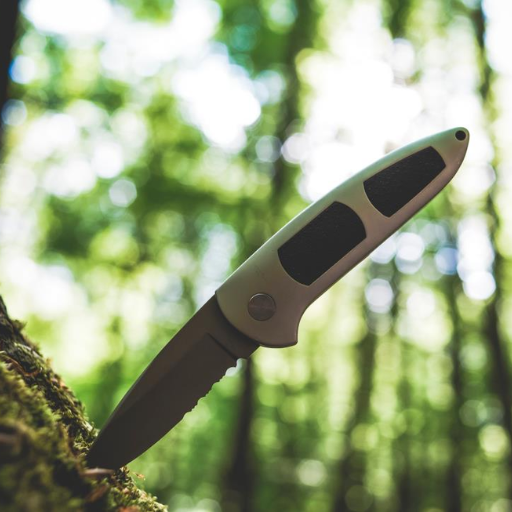
While evaluating the benefits provided by razor blades, metals of different kinds, appropriate not only for hardness but also for toughness, resistance to corrosion, and wear, can be noted. Properties of high-carbon steels, such as grade 1095, include excellent edge retention and ease of sharpening, although they are prone to rust if left uncoated in most cases. That essence applies in the case of stainless steels, such as 440C grade CPM or 20CV, which have high corrosion resistance and stay sharp for as long as well. Therefore, they are ideal in environments where moisture occurs, such as commercial kitchens. When a robust application is required, D2 tool steel, in particular, can withstand a lot of stress due to its excellent ‘matte’ and tough properties. In short, the material of blades to be used is compromised by the purpose and its surrounding conditions, striking a balance between resilience, care, and utilization.
CPM 20CV vs. S30V and S35VN
| Parameter | CPM 20CV | S30V | S35VN |
|---|---|---|---|
| Edge Retention | Superior | Medium-High | High |
| Corrosion Resistance | Excellent | High | High |
| Toughness | Medium | Medium | High |
| Ease of Sharpening | Difficult | Medium | Easier than S30V |
| Wear Resistance | Outstanding | Medium-High | High |
| Best Use | Premium EDC, high-end knives | EDC knives | Balanced performance knives |
| Composition | High vanadium, chromium content | Vanadium-rich | Niobium for added toughness |
| Durability | Excellent against wear | Good | Balanced toughness and wear |
CPM 20CV vs. M390 and Other Premium Steels
| Parameter | CPM 20CV | M390 | CTS-204P | MagnaCut |
|---|---|---|---|---|
| Edge Retention | Exceptional | Exceptional | Exceptional | High |
| Corrosion Resistance | Excellent | Excellent | Excellent | Very High |
| Toughness | Medium | Medium | Medium | High |
| Ease of Sharpening | Difficult | Difficult | Difficult | Easier than 20CV |
| Wear Resistance | Outstanding | Outstanding | Outstanding | High |
| Best Use | Premium EDC, high-end knives | High-end knives | High-end knives | Tough outdoor knives |
| Durability | Excellent against wear | Excellent against wear | Excellent against wear | Balanced toughness and wear |
| Composition Similarity | High vanadium, chromium content | Nearly identical to 20CV | Nearly identical to 20CV | Unique chromium-carbon balance |
Performance Metrics of Blade Steels
The primary attributes that blade steels are assessed according to include hardness, toughness, edge retention, corrosion resistance, and ease of sharpening. In this section, the major premium blade steels, such as CPM 20CV and M390 steel, will be analyzed, along with a quantitative and qualitative comparison.
Hardness (HRC)
In manufacturing, the Rockwell hardness scale is utilized. High hardness is. Generally known to enhance edge holding but reduce toughness.
| Steel | HRC Range | Edge Retention |
|---|---|---|
| CPM 20CV | 59-61 | Excellent |
| M390 | 60-62 | Outstanding |
| S30V | 58-60 | Very Good |
Toughness
Toughness measures the steel’s ability to resist chipping or breaking under impact. While high hardness often reduces toughness, balanced steels like CPM 3V excel in this area.
| Steel | Toughness Rating | Comments |
|---|---|---|
| CPM 20CV | Medium | Suited for general EDC use |
| M390 | Medium | Good balance of properties |
| CPM 3V | High | Excellent for hard use |
Corrosion Resistance
Steels with higher chromium content generally offer better resistance to rust and corrosion, crucial for use in humid or marine environments.
| Steel | Corrosion Resistance Rating | Chromium Content (%) |
|---|---|---|
| CPM 20CV | Outstanding | 20.0 |
| M390 | Outstanding | 20.0 |
| S30V | Good | 14.0 |
Ease of Sharpening
Ease of sharpening is influenced by the steel’s hardness and wear resistance. While harder steels can hold an edge longer, they can be more difficult to sharpen.
| Steel | Ease of Sharpening | Notes |
|---|---|---|
| CPM 20CV | Difficult | Requires diamond or ceramic stones |
| M390 | Medium | Easier than CPM 20CV |
| S30V | Medium | Fairly simple for beginners |
Summary
Before you reckon, however, it is good that you know that the choice of steel affects the performance on several levels. The grade CPM 20CV, as well as the M390, for example, are high-alloy carbon stainless steels that can effortlessly maintain very sharp edges free from corrosion, which is a feature desperately required in the making of high-end EDC knives. Conversely, CPM 3V is a far tougher grade of steel than those above and would be more suitable for heavy-duty applications. Therefore, it is prudent to consider the performance characteristics of each steel type to enable one to choose the most appropriate steel for the intended purpose.
Choosing the Right Knife
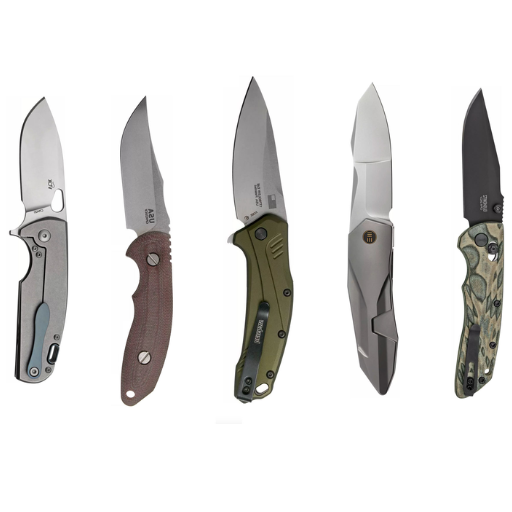
It is also essential to have the right knife for the intended use. To use a knife for general purposes, it is recommended to have a lightweight one. Such folding knives will still retain a sharp edge and resist corrosion, and will be equipped with materials such as M390 or CPM 20CV steel. A fixed blade is more suitable for such endeavors due to the increased toughness of the steel, specifically CPM 3V, in this scenario. The user should consider certain aspects, such as the length of the blade, the grip design of the handle, and how the knife can be cleaned, for the knife to serve the user’s purpose efficiently.
Factors to Consider When Selecting a Knife
- Steel’s grade
The type of steel used to make the blade primarily affects its performance. Alloys like the above-mentioned stainless grades CPM 20CV or M390 are almost impossible to resist rusting, while also offering good edge retention; hence, they are perfect for daily carry knives. However, steels, such as CPM 3V, will perform better in terms of toughness, so they should not be used for light duties, but rather for rough duties. The correct steel is specified for use in practice.
- The Design of the Blade
The design of the blade determines its intended use. For instance, drop-point blades are usually multipurpose, thus used for ordinary operations, unlike clip-point blades, which are adapted for precision operations. Then there are the tanto-shaped blades that have good piercing capabilities and can withstand harsher treatment.
- Ergonomics of the Handle
Great care should be taken when handling the knife. Stick to durable materials, such as G10 structure, Micarta, or titanium, and ensure that the finished design is robust enough to maintain control even in wet or dry conditions.
- Penis Size
Indeed, the underlying aspect is the blade’s length, which explains its function and how it operates within the legal framework. In statutes of almost all states, inch laws will be included. Knives under 3 inches would be handy for finer cuts and easier to carry around, while those over such a size will serve more defined purposes. Up-to-date information about such sizes and modes for using them should be regularly checked to determine whether any other laws exist.
- Maintenance for the knife
To be true, every knife in a set of different cookware requires a different kind of care. Tending to carbon steel blades is more demanding than any other steel type, as it requires the user to wipe off any dirt and oil after every use, whereas stainless steel does not demand such regular maintenance. Apart from this, it would be wise to check how well such a blade is incorporated into its handle or if it can be re-sharpened and washed to ensure its long-term use.
Devised in the face of the era of cinema franchises and chiseled superheroes in sleek bodysuits, it is not wrong to write about a knife with a grade cpm 20cv blade.
Benefits of Titanium Components in Knives
| Key Parameter | Benefit |
|---|---|
| Lightweight | Reduces user fatigue during extended use |
| Corrosion Resistance | Highly resistant to rust and moisture |
| Durability | Long-lasting and wear-resistant |
| Strength | High strength-to-weight ratio |
| Non-Magnetic | Ideal for specialized environments |
| Temperature Stability | Performs well in extreme temperatures |
| Aesthetic Appeal | Can be anodized for unique colors |
| Biocompatibility | Safe for medical and sensitive uses |
Understanding Drop Point Blade Design
Blades with a drop-point style, in my opinion, offer the most advantages, considering their versatility. The blade’s tip is a convex curve coming from the blade’s spine, which comes in handy while cutting or even piercing. This structure has other merits, for instance, the extent of the belly acts as a buffer between the user and the cutting material; for this reason, it is excellent when either out ‘bush’ or crafting or simply carrying for EDC purposes. It is powerful for development without compromising on the usability of the knife, including its hollow grinds and other features that can be considered in a grade CPM 20CV handle. Hence, it comes in handy in most knife cases.
References
- Niagara Specialty Metals
Niagara Specialty Metals provides detailed data sheets and technical information on CPM 20CV and other steels.
Visit Niagara Specialty Metals - ASM International
ASM International provides comprehensive resources on materials, including CPM 20CV, detailing its properties and applications.
Visit ASM International - Materials Science Journals
Journals like “Materials Science and Engineering” or “Journal of Materials Research” often publish studies on advanced steels like CPM 20CV.
Example: Materials Science and Engineering Journal
Frequently Asked Questions (FAQ)
What is CPM 20CV blade steel?
CPM 20CV is a high-performance stainless steel known for its excellent edge retention and corrosion resistance. It is produced using the Crucible Particle Metallurgy (CPM) process, allowing for a fine microstructure that enhances its toughness and overall performance in knife applications.
How does CPM 20CV compare to 1095 carbon steel?
While CPM 20CV offers superior corrosion resistance and edge retention due to its stainless steel composition, 1095 carbon steel is known for its ease of sharpening and toughness. However, 1095 requires more maintenance to prevent rusting, making CPM 20CV a favorable choice for those seeking a low-maintenance blade.
What are the toughness and edge retention properties of CPM 20CV?
CPM 20CV exhibits excellent toughness and edge retention, making it suitable for hard-use applications. The steel’s vanadium carbides contribute to its ability to maintain a sharp edge under demanding conditions, while its overall toughness ensures the blade can withstand impact and stress without chipping.
Can you explain the heat treat process for CPM 20CV?
The heat treat process for CPM 20CV involves austenitizing the steel at a high temperature followed by quenching to lock in its microstructure. This process enhances the steel’s hardness, allowing it to achieve a high Rockwell hardness (HRC), which results in a durable and sharp blade suitable for various cutting tasks.
Is CPM 20CV suitable for folding knives?
Yes, CPM 20CV is an excellent choice for folding knives due to its combination of edge holding, toughness, and corrosion resistance. These properties make it ideal for everyday carry (EDC) knives that require consistent performance in diverse environments.
What makes CPM 20CV different from other stainless steel options like S35VN and S110V?
CPM 20CV is specifically formulated to provide a balance of hardness, toughness, and corrosion resistance, making it stand out among stainless steel options like S35VN and S110V. S35VN offers improved toughness, while S110V is known for its exceptional edge retention but can be more challenging to sharpen compared to CPM 20CV.
How does the chemical composition of CPM 20CV affect its performance?
The chemical composition of CPM 20CV includes high levels of chromium for corrosion resistance and vanadium for improved hardness and edge retention. This balance allows the steel to perform exceptionally well in various cutting tasks while maintaining a sharp edge over time.
What is the best knife type to use with CPM 20CV steel?
CPM 20CV is versatile and can be used in various knife types, including chef knives, pocket knives, and custom knives. Its superior edge retention and corrosion resistance make it ideal for both everyday use and specialized applications in the knife industry.

